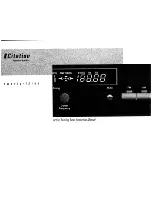
35
H I C U R
message:
This LCD message indicates that the K2's 10-watt
stage is drawing too much current. You should have
C A L C U R
set for
at least
3 . 5 0
amps. You may have a general problem with the K2
transmitter or the KPA100 (see Appendix E of the K2 manual).
H I R E F L
message:
This LCD message will be flashed if the KPA100
(100-watt final stage) has detected high SWR. When this happens, the
K2 reduces power output until reflected power is back to a safe level.
H I R E F L
warning may occur as low as an SWR of 1.5:1 at 100 watts,
and at higher SWRs for lower power levels. The warnings are disabled
during auto-tune mode because power is reduced to 20 watts.
"Distorted audio" signal report in SSB mode:
You could have
any of the RF problems discussed earlier, or your microphone may be
sensitive to RF. Some mics have a DTMF generator IC that can be
activated by stray RF. Try disabling this IC. You may be able to simply
disconnect the DC supply voltage to the mic at the Front Panel mic
configuration connector. Also try grounding the mic jack.
Can't null the SWR bridge:
Examine all components and
connections in the SWR bridge, especially T1's windings (which may be
reversed or not making contact).
SWR inaccuracy:
This is probably due to incorrect nulling of the
KAT100's SWR bridge. C31 must be adjusted so that it is in the middle
of the parts of its range where the voltmeter reads 0 volts.
Inability to achieve low SWR:
Write down the
A T U
menu
parameters after the TUNE attempt, including SWR, L, C, NET,
Exxx, Txxx, and the ATU firmware revision. Send this data to
Elecraft for analysis. Also try
A T U I N I T
, which will reset all the
ATU L and C settings to 0 on the next power up. You could have a
single defective relay or component on the L-C board. (See
Testing
Relays, Inductors, and Capacitors
, below.)
ATU error message (
E 0 0 1 - E 1 9 9
):
Please report this to Elecraft.
Normally the ATU's
E x x x
parameter will be from
E 2 0 0 - E 2 5 5
,
indicating what type of match the KAT100 firmware achieved.
Testing Relays, Inductors, and Capacitors
The KAT100 menu parameters provide a way to do component-level
troubleshooting of the L network. Start by slowly scrolling through
ATU parameters L0 through L8, C0 through C8, N1, and N2. At each
setting you should hear relays switching. If you find one that doesn't,
this may pinpoint a bad relay. If the relays are all working but you
suspect an inductor or capacitor, you can test each L and C by noting
their effect on SWR, one at a time. Start on 10 meters. Connect a 50-
ohm dummy load to one of the antenna jacks, select L0, hold TUNE,
and note the SWR reading. Then select L1 and hold TUNE again; the
SWR should change by a small amount. L2 should have a larger effect,
etc. When the inductance selections cause the SWR to go off the scale
(9.9), switch to a lower band (say 30 meters), go back to L0, then test
the remaining inductors. Similarly, you can test all 8 capacitors,
starting on 10 meters with C0, C1, etc. You'll know you have found
the bad component if it has too large or small an effect (or no effect)
on SWR, in relation to the others tested.







































